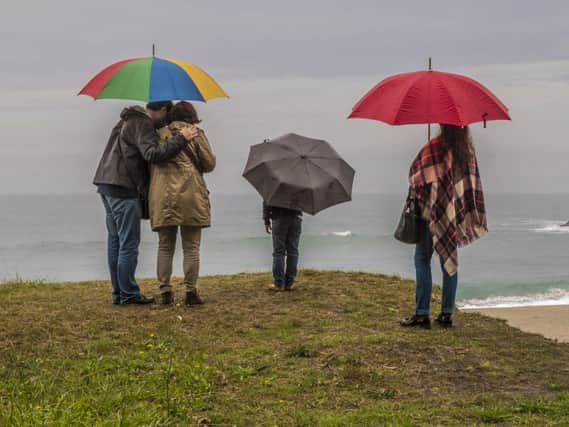The average British holiday - in numbers...


A survey of 2,000 families also found that children ask “Are we there yet?” five times and parents enjoy only two lie-ins, but do get at least 16 hours as a family on the beach.
And taking a phone to the beach is more important that a TOWEL for four in ten people, according to the holiday-by-numbers research by self-catering agency Beach Retreats.
Advertisement
Hide AdAdvertisement
Hide AdThe average British holiday sees 81 photos snapped, three Facebook statuses posted and eight ice creams are eaten per person - although two will be dropped.
Families will also have to contend with three occasions of seagulls swooping in, five sandcastles are built and three inflatables are blown up by puffed-out parents.
Parents will normally get less than two and a half hours to themselves most days but will manage three quiet drinks over the holiday.
Andrew Easton, business manager for Beach Retreats said: “Around half of British families will be taking a staycation in 2016 and the appeal of the British beach holiday stronger than ever.
Advertisement
Hide AdAdvertisement
Hide Ad“Documenting your beach holiday with photos, social uploads and selfies is now a typical part of a beach holiday, but it’s great to see that outdoor activities, discovering the beach, are still so important to families.”
One of our favourite things about UK beach holidays is the sea air - with three quarters of people (73 per cent) saying it’s what they love most about the seaside.
Being close to the sea (61 per cent), out of the wind (55 per cent) and near to a toilet (30 per cent) are amongst the key factors in deciding where best on the beach to set-up camp for the day.
More than two thirds (69 per cent) of families will not head to the beach without at least one weather-proof essential such as a windbreak, full waterproofs or an umbrella.
Advertisement
Hide AdAdvertisement
Hide AdWhilst on holiday, half (54 per cent) of British families will watch a sunset, almost a third (29 per cent) will have a barbecue on the beach and 22 per cent adults will try a local craft ale.
Traditional British beach behaviours are still as popular as ever, with building sandcastles, digging holes in the sand and exploring rock pools listed as the most popular things to do beside the seaside.
THE TYPICAL BRITISH FAMILY BEACH HOLIDAY INVOLVES…
115 miles travelled to destination
3 hours driving to destination
5 Kids ask ‘Are we nearly there yet?’
8 ice creams eaten
4 beach trips
5 sandcastles built
4 picnics
8 sandwiches
4 tantrums
6 late nights
2 cream teas
4 car games
3 accidents/scraped knees
10 times applying sun cream
2 bits of sunburn
2 lie-ins for parents
2 drinks spilt
3 films watched
3 board games played
3 inflatables blown up
3 fending off seagulls
2 dropped ice creams
2 family bike rides
2 tags to locations on Facebook
3 holiday-related Facebook statuses
81 photos taken
3 quiet drinks for the parents
3 takeaways
2 rainy days inside
2 visits to local attractions
HOLIDAY ACTIVITIES BRITS DID ON THEIR LAST SEASIDE HOLIDAY
Walked along a pier - 70 per cent
Built sand castles - 69 per cent
Played in a penny arcade/2p machines - 66 per cent
Dig holes in the sand - 61 per cent
Walking along a promenade -58 per cent
Explored rock pools - 58 per cent
Ate fish and chips wrapped in newspaper - 50 per cent
Ate a stick of rock - 38 per cent
Played bat and ball - 37 per cent
Played a board game - 37 per cent
Played I-spy - 37 per cent
Sat in a deck chair - 32 per cent
Sending postcards - 30 per cent
Went on a merry go round - 29 per cent
Went crabbing - 27 per cent
Saw a steam train - 26 per cent
Used a windbreaker - 22 per cent
Kite flying - 22 per cent
Went on a donkey ride - 18 per cent
Beach cricket - 18 per cent
Going on a helter skelter - 17 per cent
Watched a Punch and Judy show - 16 per cent
Visited a model village - 16 per cent
Ate cockles - 11 per cent
Changed in a beach hut - 4 per cent
Went fruit picking - 4 per cent
Wore a hankie on head to protect from sun - 4 per cent
Had a wheelbarrow race - 2 per cent
Ate jellied eels - 2 per cent